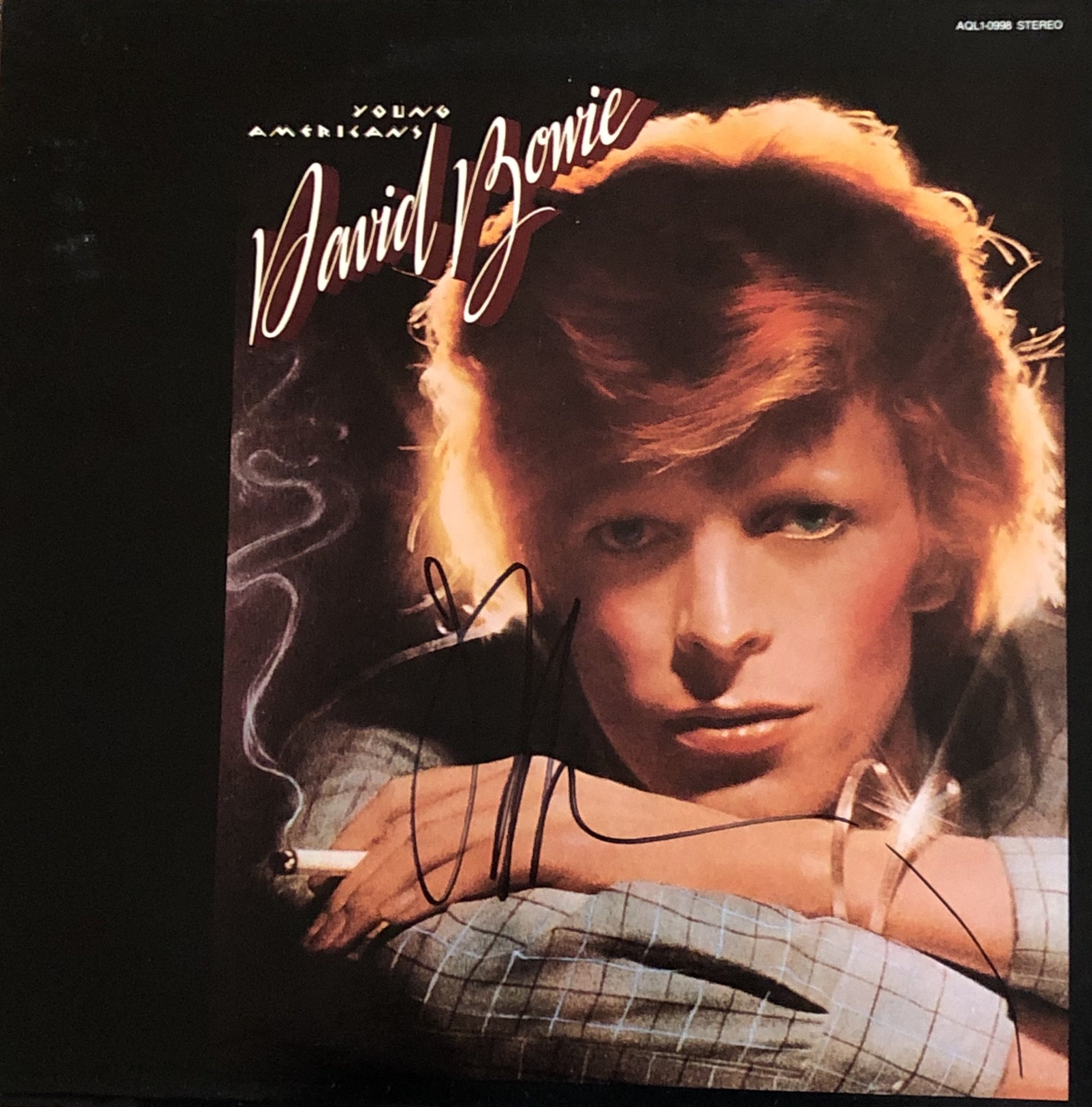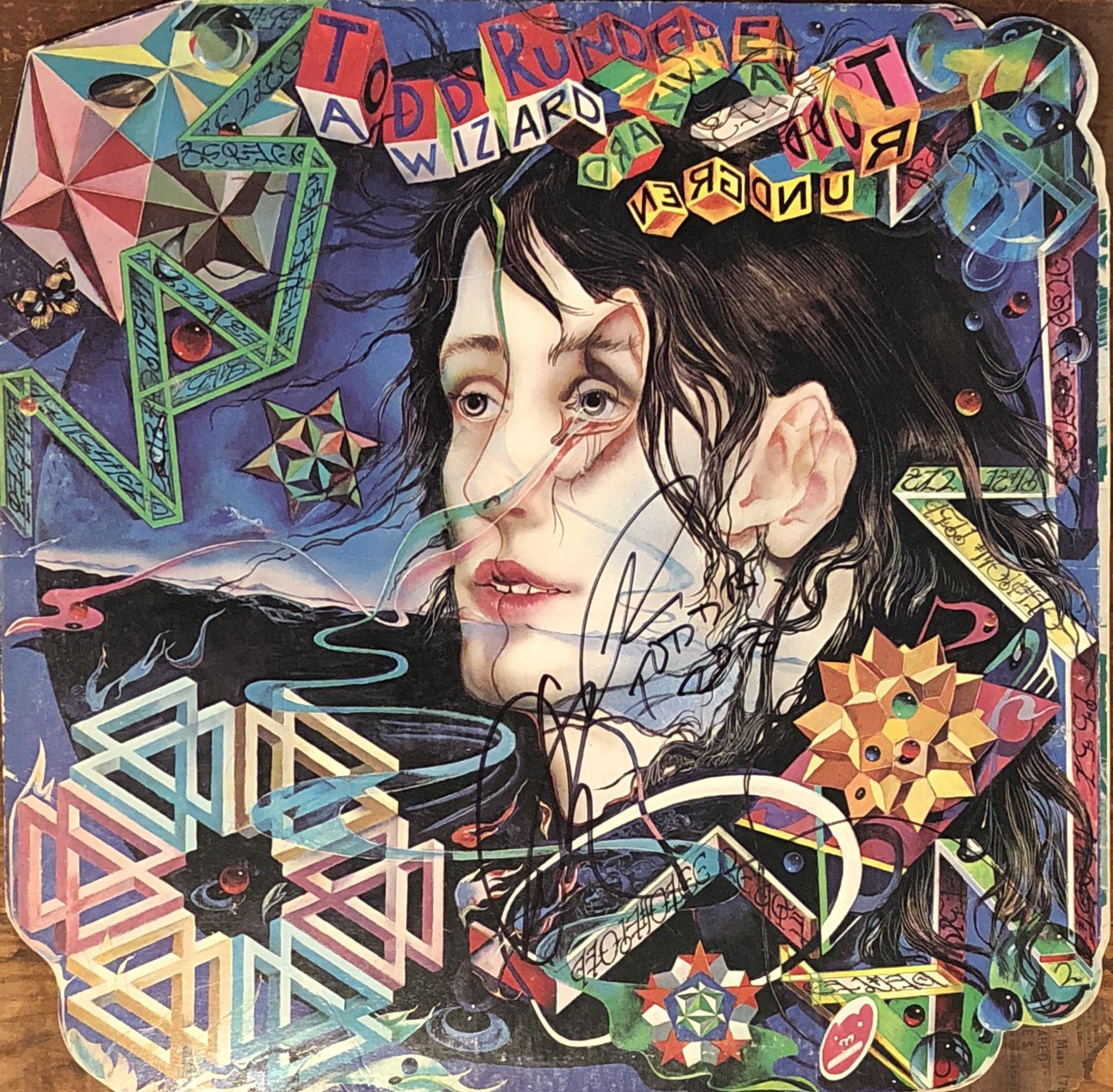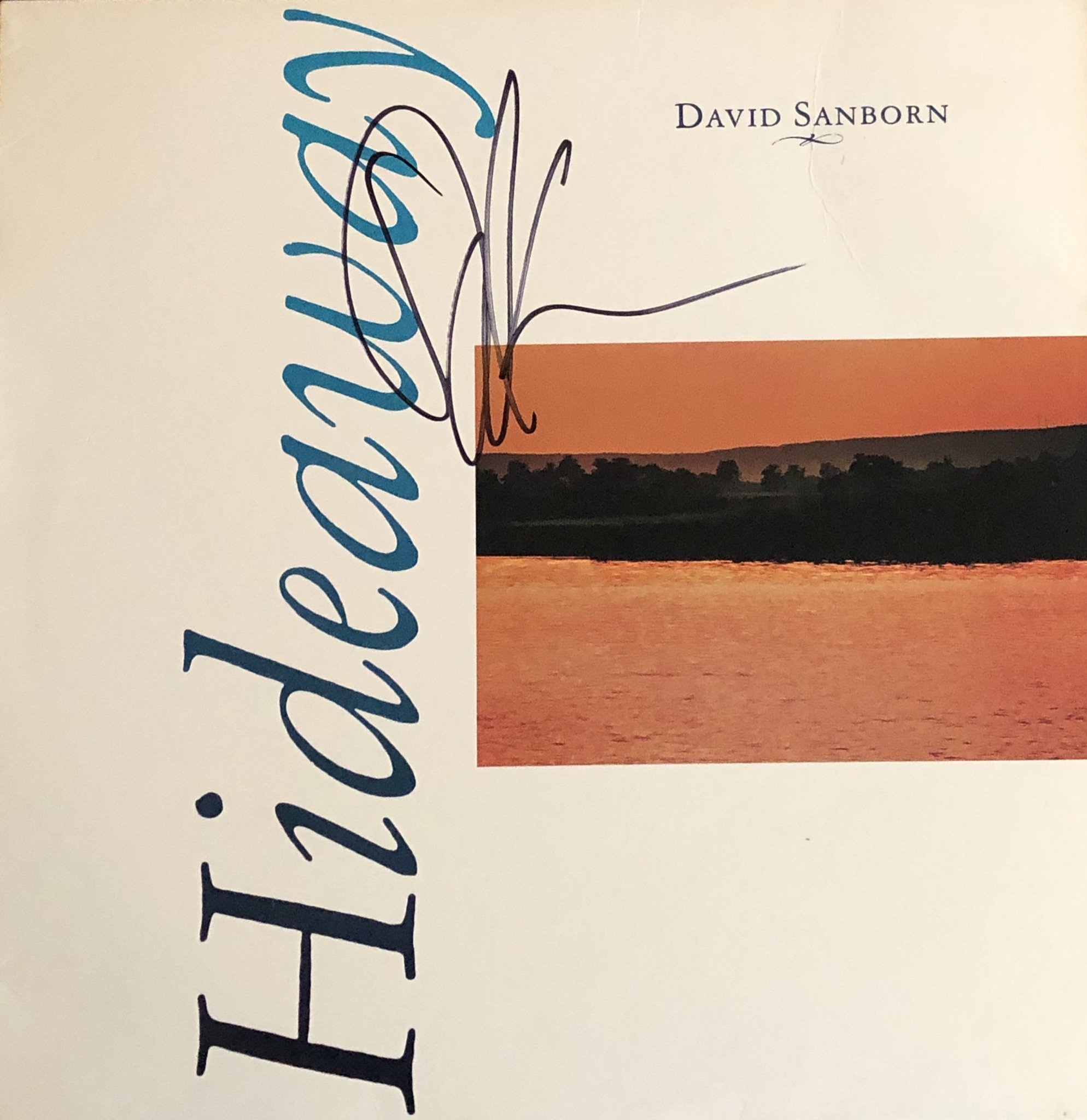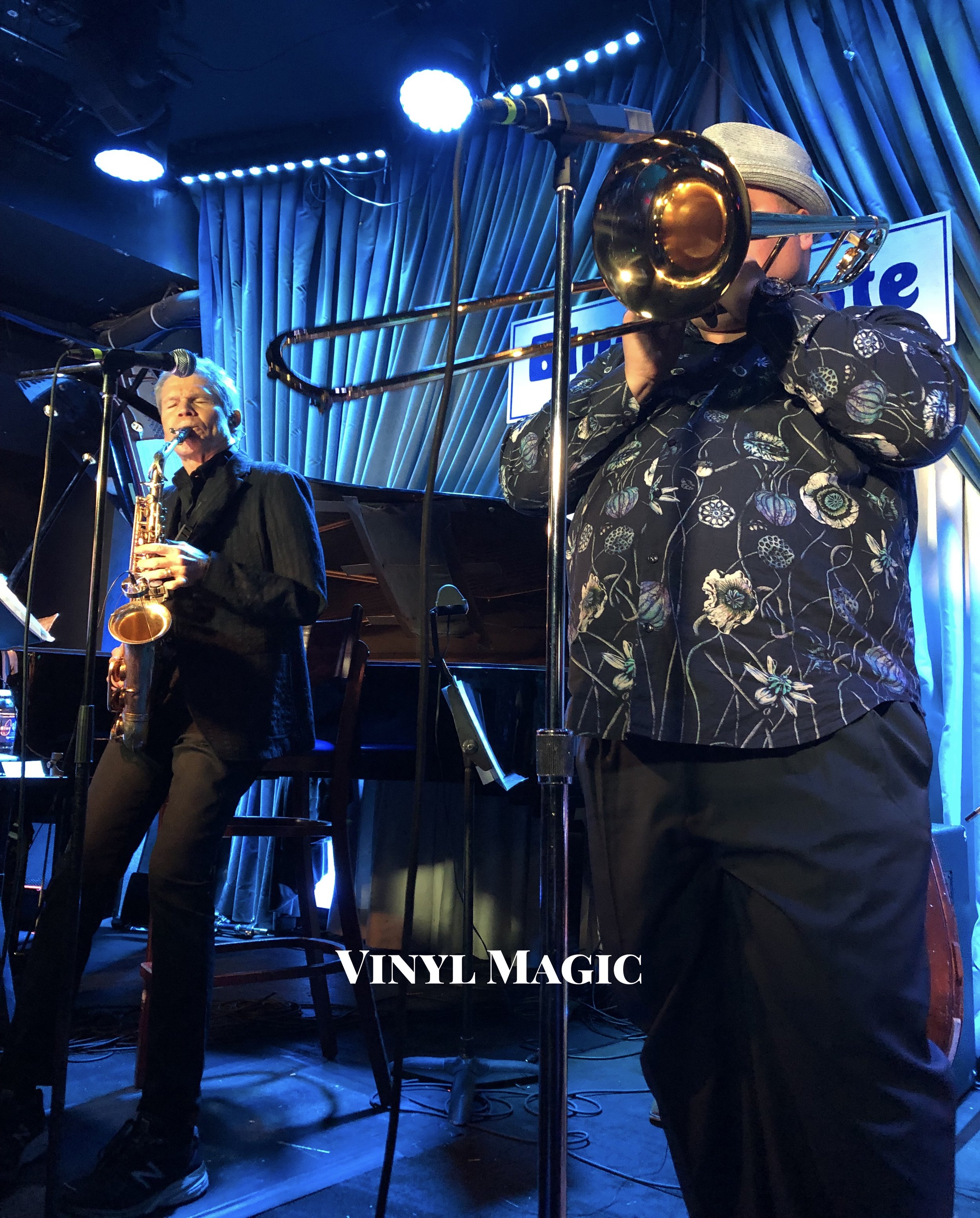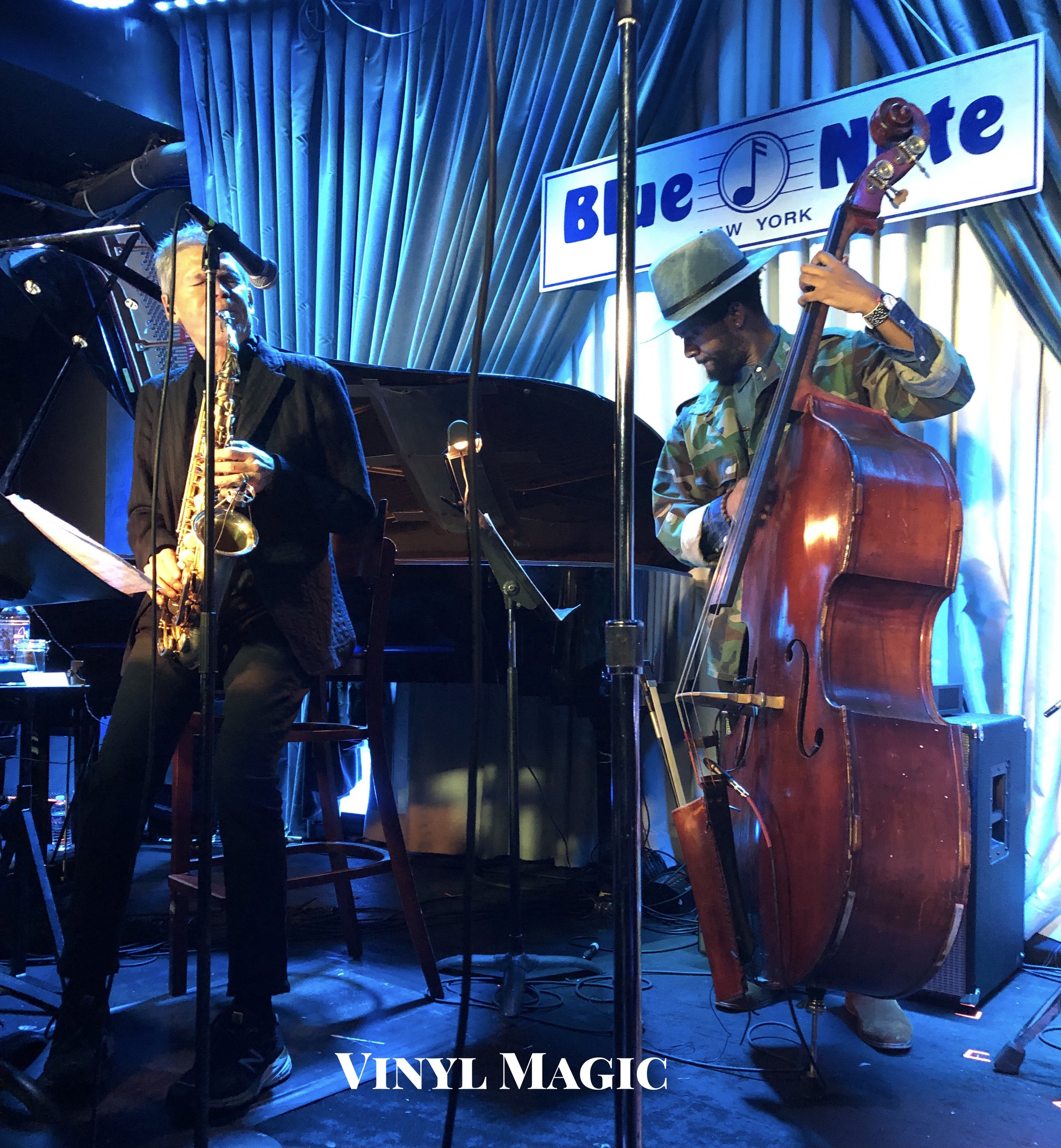David Sanborn and Me…
You don’t know how amazing that is until you try to do it yourself, that empty space comes along and you get nervous. You say to yourself, ‘Oh, man, I’ve got to fill that space with something.’ No, you don’t, but that’s the hardest thing to learn. Every day that goes by, I’m more and more convinced that dealing with space is what it’s all about. Whether it’s music or painting or writing, it’s all about filling an empty space. You start with nothing and all of a sudden there’s something. But you have to leave a little of the nothing for the something to mean anything. Listen to Miles Davis or Wayne Shorter; they got it. People were always mystified when Miles said he was influenced by Ahmad Jamal, but I think Miles was talking about the way Ahmad dealt with space.
David Sanborn
David has been wrongly dismissed by cerebral-minded critics who have judged him from an Ornette Coleman standpoint. That’s not where David is coming from; he’s coming from R&B, from Ray Charles and Hank Crawford. A lot of jazz critics look down on that as simple and not serious. But we musicians aren’t judging David by Eric Dolphy and Sonny Rollins, because that’s not what he’s trying to do. Some music you have to analyze before you get it, and I like that music too. It stimulates the cranium, but some music goes straight into the body. I like Ornette Coleman, and so does David, but I also like Ray Charles, and I like what David does in that style. He knows his chords, like the rest of us, but he’s not trying to be something he’s not. He’s very funky, and he’s got one of the most identifiable sounds in the history of the music.
bassist Christian McBride
Young Americans (1975) signed by David
I am always discovering new things about the saxophone, the way you attack a note, the way you end a note, how you shape the note, different ways to use vibrato, the variations are endless. That’s one of the great things about music in general, you never truly master it. You’re always a student.
David Sanborn
I never understood what exactly the term meant from the beginning. It didn’t make sense to me and I never figured out what is and isn’t Smooth Jazz. To me, at its worst, the term refers to music that is divested of being interesting or having much drama, or is just bland and safe, the stuff you listen to when someone puts you on hold. When I started doing what I do, that term didn’t exist, but later people kept applying it to me and I felt it was inappropriate. I’ve always fought against categorizing music, and my music obviously is influenced by jazz, R&B and other genres. If you think about it, the most interesting music is that which transcends boundaries. Ray Charles mixed gospel and jazz, James Brown’s revolutionary sound was hard to peg simply so they called it funk. A lot of it is about purists having their say. When I was growing up people said Cannonball Adderley was a sell out because his music was too commercial, but I loved it. Categories tend to be exclusionary, whether someone champions or rejects them.
David Sanborn
Backstreet (1982) signed by David
Smooth Jazz - the bane of my musical experience, anathema to purists, the bland and trite pablum of Kenny G., Spryro Gyra, The Rippingtons, Boney James (whoever the hell that is) and so many others. My late, great friend Danny Callahan - who had far bigger ears than I - once said, "You know, not everyone has to be Miles or Coltrane. It's all just music. I like to call it 'shrazz.' " Well, call it what you want, just don't put it on my turntable!
Double Vision (1989) signed by Bob James
I guess one artist who gets lumped into the Smooth Jazz category (fairly or unfairly) is alto saxophonist David Sanborn. David has had a very successful career as a band leader, arranger and composer, releasing twenty-four albums, winning six Grammys, as well as being awarded eight gold and one platinum album, commercial success that eludes most, if not all, jazz artists. He has also been a prolific session player, appearing on hundreds of recordings with B.B. King, David Bowie, James Brown, Elton John, The Rolling Stones, Linda Ronstadt, Paul Simon, Bruce Springsteen, James Taylor, Stevie Wonder and, yes, even The Eagles, to name a few. It is hard to imagine a more multi-culti genre busting musician!
Pirates (1981) signed by David, Rickie Lee Jones, Bob Weir
Born in St. Louis, David was stricken with polio as a child, and a local doctor proscribed playing the saxophone in order to build up his strength and lung capacity. Little did that doctor know how prescient and influential his advice would become. David recalled years later, "I wasn't like the other kids, my mantra was, 'Hey guys, wait up.' I used to lie in bed a lot, listening to the radio which was my theater of the imagination. To hear those songs coming through the air from Memphis and New Orleans seemed so magical." One of those songs really struck David: "Honky Tonk" by Bill Doggett featuring Clifford Scott on a searing tenor sax. He remembered, "My parents had records by Billie Holiday, Glenn Miller, Louis Armstrong, and Benny Goodman, and I liked those, but the rock 'n' roll I heard on the radio was the shit. My parent's records were working on the top end, but my songs were all about the bottom. All these dirty sounding records sounded like they were homemade, which they were. I guess they were folk music really, but when I heard "Honky Tonk", it hit me..."
Equally important was David's first concert with Ray Charles and his band. After attending a St. Louis Hawks NBA game in 1956 with his father, the Ray Charles band took center stage and played thirty minutes sans Ray. David was transfixed, especially with the one-two punch of David "Fathead" Newman on tenor saxophone and Hank Crawford on alto saxophone. “I’d been hearing so much saxophone on the radio that I couldn’t get enough of it. To me, Fathead was as big a star as Ray. He had that same earthy sound, that same punch-in-the-gut feel as my favorite rock ‘n’ roll songs, but I could tell something else was going on too. Some kind of sophisticated inner harmony was happening that reminded me of Benny Goodman or Count Basie. It was as if he were combining my records and my parents’.”
the Brecker Brothers (1975) signed by David
Displaying dedication, aptitude and a keen talent for the saxophone, by the time David was fourteen, he was sitting in and playing with blues legends Albert King and Little Milton in local St. Louis clubs and theaters. After enrolling at Northwestern University, David transferred to the University of Iowa to study with noted jazz saxophonist J.R. Monterose, and completing his studies, he headed to Haight-Ashbury in San Francisco in 1967 where the Summer of Love was in full bloom. David ran into an old jamming buddy from home, Philip Wilson, who had just landed a gig as the drummer with the Paul Butterfield Blues Band and asked David to join them the next day in a Los Angeles studio to watch them record. David dutifully rode the bus to Los Angeles and ended up sitting in on that session which became The Resurrection Of Pigboy Crabshaw, an album released in 1967. For the next four years, David recorded and toured with the Paul Butterfield Blues Band, and even appeared at the Woodstock Festival in 1969, performing after Crosby, Stills, Nash & Young, and before closer Jimi Hendrix. If you think David is Zelig, believe me, he was only just getting started.
The Gil Evans Orchestra Plays The Music of Jimi Hendrix (1975) signed by David, Billy Harper
The next chapter was David's prolific and lucrative work as a sideman. At one point, he was simultaneously playing with both jazz conductor Gil Evans and pop avatar David Bowie. Sanborn explained, "Once I finished a tour with Bowie at Madison Square Garden and caught a midnight flight to Rome the same night. I got a ride to Perugia and that night I went on with Gil (Evans) right after (Charles) Mingus. I dug that I was able to do both gigs one after the other. It wasn't as much of an adjustment as you'd think. I played the same, only the context had changed. My job is to respond appropriately to the context, and when the context has more harmonies happening, you respond to that."
After touring extensively with David Bowie (well documented on the 1974 release David Live), David joined Bowie at the Sigma Sound Studios in Philadelphia to record the Neo Soul classic Young Americans, or as Bowie described it derisively at the time, "Plastic soul. It is the squashed remains of ethnic music as it survives in the age of Muzak rock, written and sung by a white limey." Bowie's original plan was to record with MFSB, essentially the house band for Kenneth Gamble and Leon Huff's Philadelphia International Records, a label that was crushing the airwaves with the fresh grooves of Harold Melvin, The O'Jays, The Spinners, The Stylistics, and especially the Three Degrees' "TSOP (The Sound Of Philadelphia)", the theme song for Don Cornelius' television show Soul Train (where Bowie would perform in 1976.) Thankfully, the infectious grooves of "TSOP" endure as the song is played before every Phillies' home game at Citizens Park. TSOP indeed!
MFSB (the clean name was Mother, Father, Sister, Brother, the real name was Mutha F..... Son of a Bitch, a term of endearment for each musician's skill and precision), was unavailable for the session, so Bowie assembled a crack team of musicians, chief among them David Sanborn and (a not yet superstar arranging all vocals) Luther Vandross. Sanborn remembered the session very fondly, "I think David and I bonded because he was a saxophone player too. The way he presented it to me at the outset of the session was, 'There's not going to be any lead guitar on this record. There's going to be rhythm guitar and bass and drums and piano. You're going to be the lead guitar.' I didn't really know how that was going to work, but I put myself in that mindset... I really didn't have any parts, but I had been on the road with him, so we had a kind of dialogue. That was one of the great, great things about working with him. He was so responsive to input. The brilliance of Bowie was that he gave us the framework and then it was the unseen, unfelt hand of guidance from him. he was very clearly in charge, but was not 'in charge'...." It is an extraordinary recording by extraordinary musicians.
A Wizard, A True Star (1973) signed by David, Todd Rundgren
To fully chronicle David's contributions as a hired hand would take a Dickens novel, one I can neither write nor read, but here are a few highlights: Bruce Springsteen's "Tenth Avenue Freeze Out", helping the Big Man with his close friends Randy and Michael Brecker, "Guess Who" by B.B. King, "Tuesday Heartbreak" from Stevie Wonder's Talking Book, "My Thang" from James Brown's Hell, "How Sweet It Is" from James Taylor's Gorilla, the epic medley, "I'm So Proud > Ooh Baby Baby > La La Means I Love You > Cool Jerk" from Todd Rundgren's A Wizard, A True Star, "Time Out Of Mind" from Steely Dan's Gaucho, "Don't Stop The Dance" from Bryan Ferry's Boys and Girls, and so many others.
Back To Back (1976) signed by David, Randy Brecker
Probably David's most underrated work was as the host of Night Music, a short lived NBC network television show in the late 1980s, which featured diverse artists collaborating with each other, unusual pairings finding common ground with song composition and peerless musicianship. Where else could Miles Davis jam with Marcus Miller, George Duke and Kenny Garrett, Sonny Rollins trade riffs with Leonard Cohen on "Tower Of Song", Jack Bruce and Joe Walsh perform "White Room", Al Green sing "Put A Little Love In Your Heart" with backing by Jack Bruce and Joe Walsh, Bootsy Collins sing "Healing Power" with exquisite accompaniment by jazz pianist Carla Bley, Steve Swallow and Hiram Bullock, Carlos Santana and Wayne Shorter jam on "La Raza", and, perhaps my favorite pairing, Nick Cave with Charlie Haden, Toots Thielemans, and Omar Hakim on "Hey Joe." Throughout all episodes, David Sanborn injects his unmistakeable alto into the mix, at times cool and detached, other times fiery and volcanic. YouTube exists solely for this type of remarkable content: seek it out and watch, listen and learn from these masters.
Hideaway (1979) signed by David
Though I have been listening to David Sanborn (albeit through his session work) for decades, I had never seen him live. That changed recently when a good friend (thanks Keith!) invited me to see him at the Blue Note in New York City. With Danny's long ago wise counsel of "It's just music" ringing in my ears propelling me forward, I decided to keep an open mind. I was not disappointed. Besides, anyone whose heroes are Ray Charles, David "Fathead" Newman and Hank Crawford is certainly a kindred spirit.
David Sanborn, Blue Note, NYC February 22, 2019
There was a good buzz in the club as people were excited to see David perform in an intimate setting., and the band took the stage and they opened with two Michael Brecker songs. Afterwards, David noted, "Those two songs were written by Michael Brecker whom I, and many others, consider to be one of the great saxophonists and composers of the 20th and 21st Century. I miss him but I am happy to play his music." "Maputo" came next, written by his long time collaborator, bassist Marcus Miller. Quite a groover, the intro by Andy Ezrin on electric piano revealed some deep African percussive funk with steel drum shadings, while underneath, the stout upright bass of Ben Williams and the sturdy drums of Billy Kilson laid a powerful foundation. David then joined on a free wheeling and frenetic solo while Michael Dease layered in some trombone grease.
David and Michael Dease, Blue Note, NYC February 22, 2019
After thunderous applause, David said, "The next song we are going to play comes from an unusual source. The melody was written a long time ago by Charles Dawes (in 1911) who served as Calvin Coolidge's Vice President. Lyrics were later written in the 1950s (by Carl Sigman), and it became an unlikely hit for Tommy Edwards. Here's our version, I hope you like it." An aching, poignant song which has been covered by Nat King Cole, Merle Haggard, Rahsaan Roland Kirk, and Van Morrison (all my favorite food groups!), David and his band performed it with an exquisite melodic lyricism. Next, David turned up the heat with "Spanish Joint", written by D'Angelo and the late trumpeter Roy Hargrove, and there was some filthy interplay between the sultry trombone of Michael Dease and David's preening alto in a captivating call and response. Before the last song, David disclosed, "We're going to play an old song of mine. Actually, we are going to attempt to play an old song of mine that was requested. I hope I remember it. If we fuck it up, remember, it was a request." Everyone laughed with David before they played "The Dream", a track from A Change Of Heart, released in 1987. A mid tempo ballad, each player stretched out on their instruments, a fitting coda to a great night of music.
David Sanborn Blue Note, NYC February 22, 2019
Next, it was upstairs to the dressing room to get some vinyl signed. David was warm and generous with his time, though he seemed a bit frail off stage, a stark contrast to the commanding presence he was on stage. He signed the vinyl with nary a comment and I expressed my gratitude for all he had done in his amazing, enduring career. I was really glad to hear David and his band play, though I haven't entirely changed my mind on Smooth Jazz, Shrazz or whatever you want to call it. To paraphrase Supreme Court Justice Potter Stewart's dictum in a whole 'nother context, I know it when I hear it, and I certainly didn't hear it from David and his band at the Blue Note!
David and Ben Williams, Blue Note February 22, 2019
Choice David Sanborn Cuts (per BK's request)
https://www.youtube.com/watch?v=ydLcs4VrjZQ
"Young Americans" Dick Cavett TV show with David Bowie, Luther Vandross
https://www.youtube.com/watch?v=YcE54Dcvo5c
"I Wanna Do It Good To Ya" Barry White on Letterman with David on alto
https://www.youtube.com/watch?v=1Mp0rBHhXMs
"How Sweet It Is" James Taylor with David Live 1979
https://www.youtube.com/watch?v=bq4NhcfurgU
"Honky Tonk" Bill Doggett 1956
https://www.youtube.com/watch?v=gdllstkW9yI
“Who By Fire" Leonard Cohen with David, Sonny Rollins 1989
https://www.youtube.com/watch?v=n7eiOsxzjKc
"Hey Joe" Nick Cave with Charlie Haden, Toots Thielemans et al 1989
https://www.youtube.com/watch?v=OSsGIQt2Lbg
“Maputo" with Bob James Double Vision 1986
https://www.youtube.com/watch?v=SBZ7YURLAIc
“The Dream" A Change Of Heart 1987
https://www.youtube.com/watch?v=0cKkS5GOdPo
“It's All In The Game" Rahsaan Roland Kirk
Ben Williams laying out at Blue Note, NYC February 22, 2019
